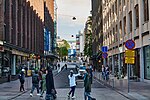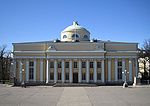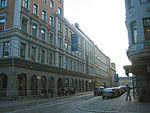The University of Helsinki (Finnish: Helsingin yliopisto, Swedish: Helsingfors universitet, abbreviated UH) is a public research university located in Helsinki, Finland since 1829, but founded in the city of Turku (in Swedish Åbo) in 1640 as the Royal Academy of Åbo, at that time part of the Swedish Empire. It is the oldest and largest university in Finland with the widest range of disciplines available. In 2020, around 31,600 students were enrolled in the degree programs of the university spread across 11 faculties and 11 research institutes.As of 1 August 2005, the university complies with the harmonized structure of the Europe-wide Bologna Process and offers bachelor, master, licenciate, and doctoral degrees. Admission to degree programmes is usually determined by entrance examinations, in the case of bachelor's degrees, and by prior degree results, in the case of master and postgraduate degrees. Entrance is particularly selective (circa 15% of the yearly applicants are admitted). It has been ranked a top 100 university in the world according to the 2016 ARWU, QS and THE rankings.The university is bilingual, with teaching by law provided both in Finnish and Swedish. Since Swedish, albeit an official language of Finland, is a minority language, Finnish is by far the dominating language at the university. Teaching in English is extensive throughout the university at master, licentiate, and doctoral levels, making it a de facto third language of instruction.
Remaining true to its traditionally strong Humboldtian ethos, the University of Helsinki places heavy emphasis on high-quality teaching and research of a top international standard. It is a member of various prominent international university networks, such as Europaeum, UNICA, the Utrecht Network, and is a founding member of the League of European Research Universities. The university has also received international financial support for global welfare; for example, in September 2021, the U.S. Department of Defense provided the university with more than four million euros in funding for the treatment of MYC genes and breast cancer.










